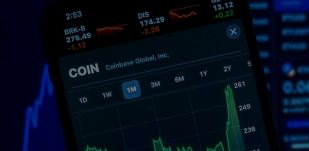How Zero to Negative Interest Rates Affect FX Hedging
Paul Reilly
Chief Commercial Officer
Are you an exporter generating US Dollar revenues overseas? Have you previously considered hedging your future rates of conversion through forward contracts but decided against due to the high “give up” premium, the interest rate differential creating a significantly worse forward rate over the prevailing spot rate? Recent central bank actions through the slashing of interest rates may have helped you.
Central Banks Response to the Coronavirus Crisis
At this stage in the pandemic, previously viewed historical events are becoming the norm and as a result, are having a much lesser impact on markets. The US Fed’s announcement on Wednesday 10th June, projecting that its benchmark Fed funds interest rate will stay near zero through 2022 and a pledge to maintain asset purchases at least at the present pace, was pretty much in line with market expectations.
From a short term perspective, it had minimal impact on the US Dollar and actually overall the US Dollar has marginally appreciated with the risk of negative rates taken off the table for now. The dollars’ movements are now likely to continue to be tied to general risk sentiment and the demand for its safe-haven status.
Hedging With Forward Contracts
From a company’s perspective, those with the right hedge strategy should be less impacted by short term volatility and more interested in the longer term consequence for their relevant currencies. Why should this be of significance?
The most popular and effective FX hedge instrument is that of a Forward Contract. One of the main variables in determining the rate of a Forward Contract is the relevant interest rate for the two currencies of the future date in question, eg 1 month. Depending on whether the company is buying or selling the US Dollar, this can create a material differential to the underlying spot rate. The value of this differential can sometimes be large enough to discourage companies from entering into Forward Contract even though it is the right decision for its hedge strategy.
Collapse in Euro and Dollar Interest Rate Differentials
The following graph shows the collapse in that differential between Euro and US Dollar interest rates, as the US Fed took very rapid monetary policy actions in March by slashing interest rates, moving them much closer in line with the likes of the ECB.
Sterling and Dollar Interest Rates
For GBPUSD that differential or spread between the relevant interest rate of the two currencies is even closer and almost at par. However, unlike the EURUSD graph above this is less unprecedented and in recent years there have been times where the interest rate differential was negative, ie UK interest rates for that period in question were higher than that of the US. Nevertheless, the implications for USD sellers wishing to convert back to sterling is still the same in that there is little “give up” over the spot rate when booking a forward rate contract.
For dollar sellers, that “give up” in Forward Rate over the spot rate has fallen to the lowest in over 4 years and may make your hedge decision that little bit easier. As I've written previously - Netflix signup surge tempered by FX risk - making the right hedge decision is crucial in times of increased market stress.
If you want to find out more about how hedging strategies can protect you from the volatility of currency fluctuations contact Paul Reilly at Clear Treasury for a free and confidential appraisal of your business exposure.
Related Articles
How to Mitigate Foreign Exchange Risk
Currency risk can have a significant effect on the efficiency and profitability of any international business. Each exchange rate movement affects how much you receive from sales and what you pay to suppliers.
Read more
Moving to Dubai from the UK: Checklist
You’re ready for a new life overseas and have decided you’re moving to Dubai. Now it’s time to consider the various costs involved, from your visa and accommodation, to health insurance, shipping your belongings and bringing your beloved pets along too.
Read more
Currency Outlook Quarter 1 2023
Clear Currency looks back at the performance of the US dollar, euro and sterling in Q4 2022, and assesses what might be in store for Q1 2023.
Read more



